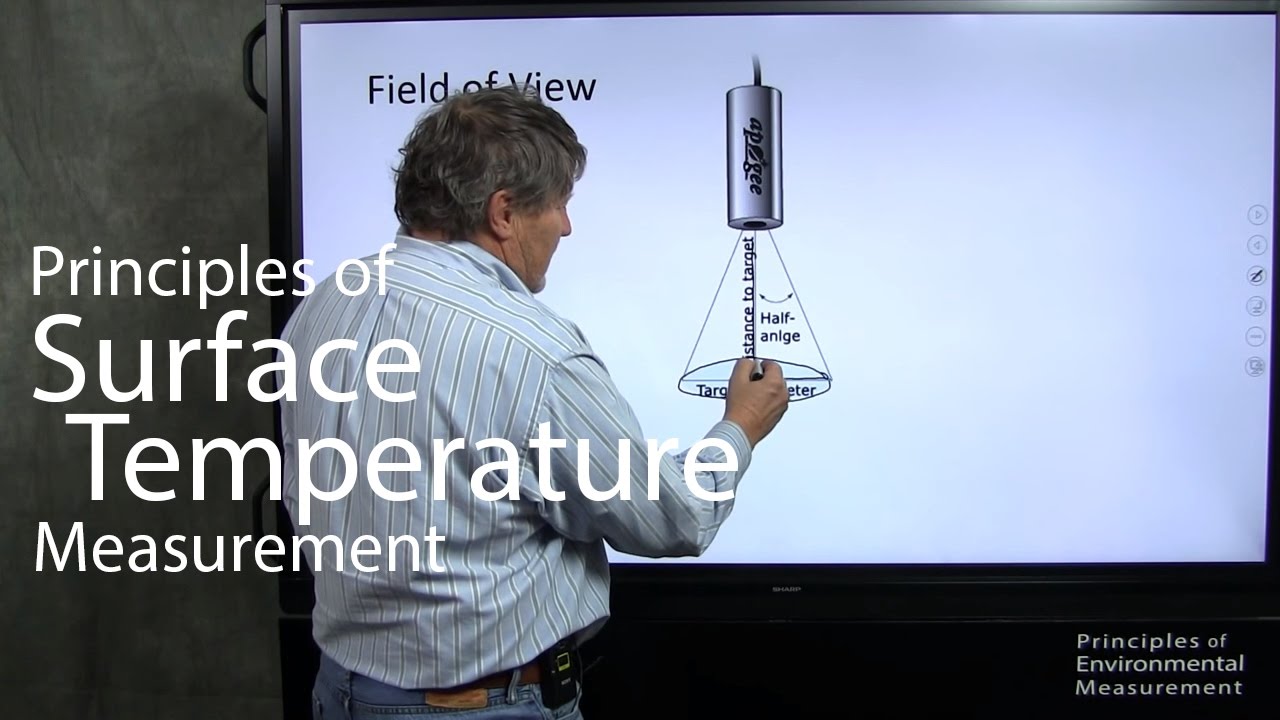Dr. Bruce Bugbee, president of Apogee Instruments, talks in-depth about the use of research-grade infrared radiometers for conducting high-accuracy, non-contact, surface temperature measurement. In certain applications, using a high-accuracy infrared radiometers is critical for making measurements that are meaningful. In particular, Apogee Instruments IR sensors have been used all over the world for hydrology studies, road-surface monitoring, plant canopy drought stress detection, and several other applications requiring a rugged, highly accurate sensor. To elaborate on one application, Dr. Bugbee, who is also a current professor of crop physiology at Utah State University, discusses their use in crop canopy temperature monitoring in this lecture.
VIDEO CONTENT
00:07 Measuring Surface Temperature-when temperature sensors are used to measure surface temperature only part of the sensor is touching the ground, measuring surface temperature, and the remainder is touching the air, measuring air temperature. This does not give the true surface temperature, which is why we use infrared sensors.
01:55 Applications of Infrared Radiometer – Infrared sensors measure the true radiation coming right from the surface, soil, leaf, or road surface. Apogee infrared radiometers have been used in agriculture for plant canopy stomatal conductance or irrigation scheduling (02:26), to predict snow melt (03:15), and icy road analysis (03:52).
04:15 How Infrared Radiometers Work- Stefan Boltzmann Law Explained: Energy is proportional to temperature, if temperature goes up then energy goes up. This is fundamentally how we tell radiation from a surface, by the energy emitted from it.
06:24 Emissivity – Emissivity ranges from 0 to 1 and is characteristic of the surface.
07:17 Sensor Calibration- To get accuracy we custom calibrate every sensor. The calibration chamber has a blackbody used to calibrate the sensors. It’s a cone shaped cavity that is painted flat black and has an emissivity close to 1.0. The sensor bodies are controlled at one temperature, the targets controlled at another temperature. Apogee’s sensors are specified at plus and minus 0.2 degrees from -20 to 65 C.
12:38 Field of View- It is critical to understand what you are looking at. The field of view (FOV) of your sensor determines the surface area you measure. Apogee sells 4 different FOVs, 3 circular and 1 horizontal aperture. Circular FOVs have half angles of: 22, 18, and 14 degrees. The horizontal FOV has a horizontal half angle of 32 degrees and vertical half angle of 13 degrees. To help determine how to mount your IR sensor and which FOV is needed to properly see your target, Apogee developed the FOV calculator that will show you the surface area the sensor is measuring found at http://www.apogeeinstruments.com/irr-calculators (15:32).
16:44 Atmospheric Window – It is important that your sensor does not get interference from the atmosphere and can see right through to the surface. Many lower quality sensors measure atmospheric radiation including water vapor and carbon dioxide. Apogee sensors are calibrated to measure the atmospheric window from 8 to 14 microns, which does not have interference from carbon dioxide or water vapor.
18:11 Measuring Partial Canopy & Stomatal Conductance Example – Covers an example of how to measure a partial plant canopy and angle the sensor to view more of the plant canopy and less background. Conclusion: Canopy temperatures can be used to determine plant canopy water stress and in this example canopy stomatal conductance. There are simple methods to do this, and complex methods are the ones described in the example, where we measure all the parameters and account for all of them. The complex measurements work over a wider range of conditions than the simple measurements.
29:40 Sensor Maintenance – Three things cause problems: 1) Optical path interference. Spiders can make nests inside the window of the sensor. To fix, clean window with a Q-tip. 2) Calcium deposits. Sprinkler irrigation hits the sensor leaving a hard water film on the window. To fix, dip a Q-tip in vinegar and clean the window. 3) Dust and dirt can build up on the window causing errors. To fix, use window cleaning product and a Q-tip. When cleaning the window don’t push too hard because you can scratch the window.
More information at http://www.apogeeinstruments.com/infraredradiometer/ and http://www.apogeeinstruments.com/infrared-radiometer-support/.
——
More videos on infrared radiometers at https://www.youtube.com/watch?v=ncGOymKsQo4&list=PLOTpNTsJcpqc4IYYKV1UjiTKHtTgLutZU.
—–
Follow us to see all the cool places our sensors are used, get notices for free classes and how to videos, and product announcements!
-Blog
http://blog.apogeeinstruments.com/
-Facebook
https://www.facebook.com/ApogeeInstruments/
-Twitter
https://www.twitter.com/ApogeeInst/
-LinkedIn
https://www.linkedin.com/company/1084851
source

